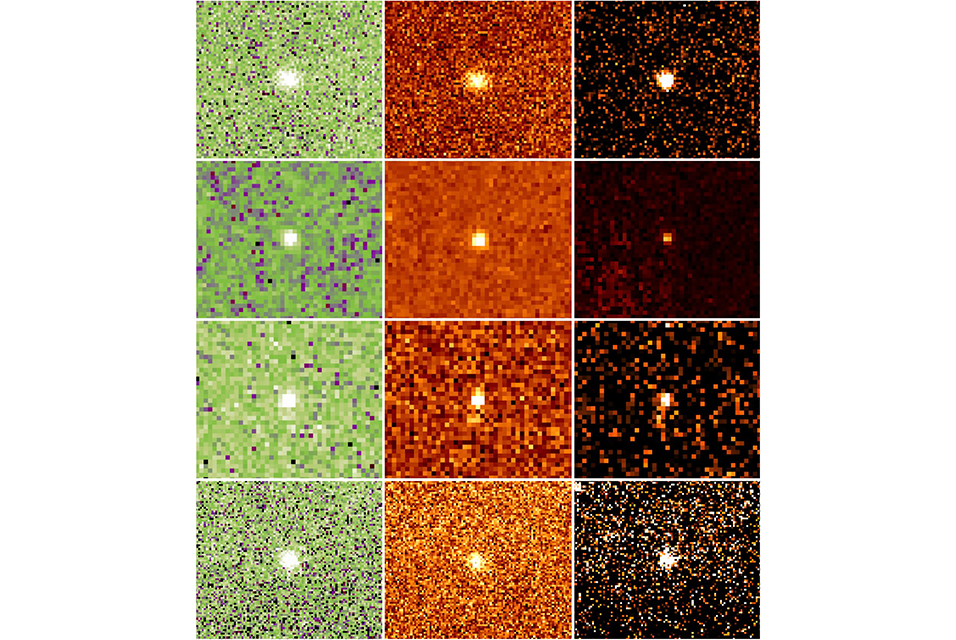LONDON.- Asteroids sharing their orbits with the planet Neptune have been observed to exist in a broad spectrum of red color, implying the existence of two populations of asteroids in the region, according to a new study by an international team of researchers. The research is published in the journal Monthly Notices of the
Royal Astronomical Society: Letters.
The team of scientists from the U.S., California, France, the Netherlands, Chile and Hawaii observed 18 asteroids sharing the orbit of Neptune, known as Neptunian Trojans. They are between 50 and 100 km in size and are located at a distance of around 4.5 billion kilometers from the sun. Asteroids orbiting this far away are faint and so are challenging for astronomers to study. Before the new work, only about a dozen Neptunian Trojans had been studied, requiring the use of some of the largest telescopes on Earth.
The new data were gathered over the course of two years using the WASP wide field camera on the Palomar Observatory telescope in California, the GMOS cameras on the Gemini North and South telescopes in Hawaii and Chile, and the LRIS camera on the Keck Telescope in Hawaii.
Of the 18 observed Neptunian Trojans, several were much redder than most asteroids, and compared with other asteroids in this group looked at in previous studies. Redder asteroids are expected to have formed much further from the sun; one population of these is known as the Cold Classical trans-Neptunian objects found beyond the orbit of Pluto, at around 6 billion kilometers from the sun. The newly observed Neptunian Trojans are also unlike asteroids located in the orbit of Jupiter, which are typically more neutral in color.
The redness of the asteroids implies that they contain a higher proportion of more volatile ices such as ammonia and methanol. These are extremely sensitive to heat, and can rapidly transform into gas if the temperature rises, so are more stable at large distances from the sun.
The location of the asteroids at the same orbital distance as Neptune also implies that they are stable on timescales comparable to the age of the solar system. They effectively act as a time-capsule, recording the initial conditions of the solar system.
The presence of redder asteroids among the Neptunian Trojans suggests the existence of a transition zone between more neutral colored and redder objects. The redder Neptunian asteroids may have formed beyond this transition boundary before being captured into the orbit of Neptune. The Neptunian Trojans would have been captured into the same orbit as the planet Neptune as the ice giant planet migrated from the inner solar system to where it is now, some 4.5 billion kilometers from the sun.
Lead author Dr. Bryce Bolin of the NASA Goddard Space Flight Centre said, "In our new work we have more than doubled the sample of Neptunian Trojans studied with large telescopes. It's exciting to find the first evidence of redder asteroids in this group."
"Because we have a larger sample of Neptunian Trojans with measured colors, we can now start to see major differences between asteroid groups. Our observations also show that the Neptunian Trojans are also different in color compared to asteroid groups even further from the sun. A possible explanation may be that the processing of the surfaces of asteroids by the sun's heat may have different effects for asteroids at varying solar distances."









